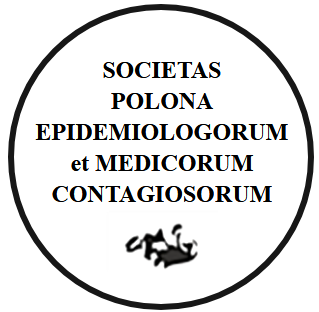RESEARCH PAPER
Ukrainian population awareness regarding leptospirosis
1
Department of Infectious Diseases, Danylo Halytsky Lviv National Medical University, Ukraine
These authors had equal contribution to this work
Submission date: 2025-04-21
Final revision date: 2025-08-04
Acceptance date: 2025-08-12
Online publication date: 2025-08-19
Publication date: 2025-10-03
Corresponding author
Olena Zubach
Department of Infectious Diseases, Danylo Halytsky Lviv National Medical University, Pekarska Street, 69, 79010, Lviv, Ukraine
Department of Infectious Diseases, Danylo Halytsky Lviv National Medical University, Pekarska Street, 69, 79010, Lviv, Ukraine
Przegl Epidemiol 2025;79(2):193-200
KEYWORDS
TOPICS
ABSTRACT
Background: Leptospirosis is one of the most common bacterial zoonoses in the world. However, there is scarce available literature on public awareness of the infection and the main clinical symptoms of leptospirosis. Objective: The aim of this study was to assess the level of leptospirosis awareness among the general population and individuals with occupational risk of the disease in Lviv Region, Ukraine. Material and methods: A leptospirosis questionnaire on potential risk factors, routes of transmission and ways of protection along with the demographic data was prepared, posted on Facebook and distributed as a printed version. The statistical analysis was performed using Fisher's two-sided test. Results: A total of 446 individuals completed the questionnaire. Of these, 364 persons had no occupational risk of acquiring leptospirosis, while 82 of them had it. The study showed the following levels of leptospirosis awareness among the participants: 193 out of 446 (43.3%) individuals knew what leptospirosis was, with 158/364 (43.4%) representing general population (Group 1) and 35/82 (42.7%) representing individuals with an occupational risk of acquiring leptospirosis (Group 2), p>0.05. Furthermore, a total of 55.8% of all the participants knew how they could contract leptospirosis: 194/364 (53.3%) in Group 1 and 55/82 (67.1%) in Group 2, p<0.05. The most common risk factors of acquiring leptospirosis observed in both groups were as follows: swimming in ponds and lakes with stagnant water (57.69% in Group 1and 79.26% in Group 2, p<0.01), and the presence of rodents in houses, basements and utility rooms as well as periodic visits to these premises by respondents (45.6% of the respondents in Group 1 and 58.53% of the respondents in Group 2, p<0.01). Conclusions: Outreach campaigns should be implemented to raise the awareness of leptospirosis, both among the general population and among the individuals at increased risk of exposure.
Share
RELATED ARTICLE
We process personal data collected when visiting the website. The function of obtaining information about users and their behavior is carried out by voluntarily entered information in forms and saving cookies in end devices. Data, including cookies, are used to provide services, improve the user experience and to analyze the traffic in accordance with the Privacy policy. Data are also collected and processed by Google Analytics tool (more).
You can change cookies settings in your browser. Restricted use of cookies in the browser configuration may affect some functionalities of the website.
You can change cookies settings in your browser. Restricted use of cookies in the browser configuration may affect some functionalities of the website.




